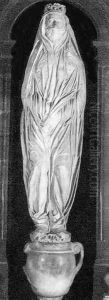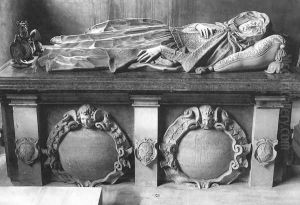Nicholas the Elder Stone Paintings
Nicholas Stone, also known as Nicholas the Elder, was a prominent English sculptor, architect, and master mason of his time, born in 1586 in Woodbury, near Exeter, Devon, England. His contributions to the fields of sculpture and architecture during the early 17th century positioned him as a significant figure in the evolution of British art and architecture, particularly during the reign of King James I and Charles I. Stone's legacy is marked by his versatile craftsmanship and his role in introducing and popularizing Renaissance and Baroque styles in England.
Stone's early life was characterized by his apprenticeship with his father, who was a mason. This foundational period was crucial in shaping his skills and interests in the craft. His talent and ambition led him to travel to Holland, where he worked under the renowned sculptor Hendrick de Keyser in Amsterdam, further honing his skills and absorbing influences that he would later incorporate into his work in England. This exposure to European styles and techniques was instrumental in his development as an artist and architect.
Upon his return to England, Stone quickly established himself as a master mason and sculptor, gaining commissions from the royal court and the church. His works included tombs, monuments, and architectural projects, which showcased his mastery over both stone and design. Among his notable works are the tomb of Elizabeth Drury in St. Andrew's Church, Norfolk, and the elaborate watergate at York House, London, which is now known as the Water Gate and stands in Embankment Gardens. His ability to blend classical elements with English tradition made his works stand out and earned him widespread recognition.
Stone's contributions were not limited to his artistic outputs; he also played a significant role in the professional organization of stonemasons and sculptors. In 1619, he was appointed as the Master Mason to James I, and later, to Charles I, positions that affirmed his status and influence in the realm of construction and design. He was also involved in the restoration and construction of several significant buildings, including parts of King's College Chapel, Cambridge, and the Banqueting House at Whitehall.
Nicholas Stone's death in 1647 marked the end of a distinguished career that left a lasting impact on English sculpture and architecture. His works continue to be studied and admired for their craftsmanship and stylistic innovation, reflecting the transition of English art from the medieval to the modern. Stone's legacy is also preserved in the detailed diary he kept, which provides valuable insights into the practices, economics, and social aspects of the art and architecture of his time.

